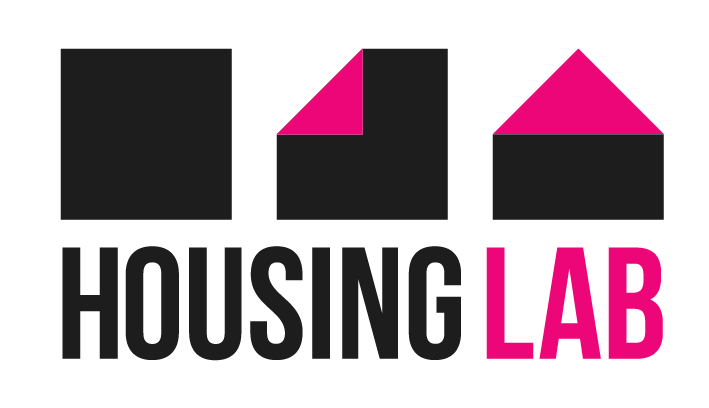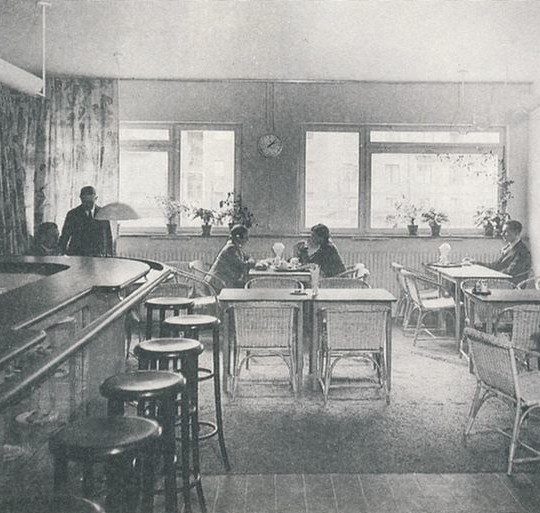Last time I wrote about the Russian expression of housing as welfare hubs in the '20. Moving to a similar idea, we go to Sweden and to an Idea born by the fight of women to a more manageable everyday life. The “central kitchen idea” in Sweden is part of the experiments of dwellings with integrated services: Those were related with the functionalist approach; Louis Sullivan, probably the most known for this idea, was striving for "honest" approaches to building design that focused on functional efficiency.
The first functionalist collective housing unit in Sweden, built in 1935 at John Ericssonsgatan 6 in Stockholm. Picture from http://anavedobomgosto.blogspot.it/2012/02/john-ericssonsgatan-6.html
In Sweden - as in other European countries - functionalist architects regarded housing with collective services as a logical expression of modernization. The word "collective housing unit" ( "kollektivhus" in Swedish) seems to have been introduced by the functionalists. In Sweden the idea was mainly developed by Sven Markelius, architect (later professor) and Alva Myrdal, social reformer (later minister and UN peace negotiator). For them collective housing was not only an instrument to "collectivize the maid" as in earlier experiments, but rather to enable women to combine house work and paid employment outside the home.
Alva Myrdal wrote: “Urban housing, where twenty families each in their own apartment cook their own meat-balls, where a lot of young children are shut in, each in his or her own little room – doesn’t this cry for an overall planning, for a collective solution?!”
Sven Markelius' kollektivhus vid John Ericssonsgatan 6. Picture from: http://commons.wikimedia.org/wiki/File:Kollektivhus_Markelius_1.jpg
She saw the need and the potential in urban dwellings and the kitchen was a starting point together with a place for children to socialize. Cooking remains one of the main activities for women to mange beyond their work; to offer quality dishes for the whole family the women in the early 20 had to think about going out for grocery, preparing and washing. This became difficult as more and more women went to work n the morning and got back home just in time for dinner. On the other had, as family were shrinking, children alone in their house were isolated and did not cultivate social relationships. This is the reason for the first collective houses in Sweden to concentrate on food and children care.
The first functionalist collective housing unit in Sweden was built in 1935 at John Ericssonsgatan 6 in Stockholm. It was designed by Sven Markelius, who lived there himself for many years. In this design, three clusters of long, ten-story slabs including separate communal dining facilities were arranged in an open landscape. Each building group was a thinly disguised version of Russian collective housing experiments of the late 1920's such as the Narkmofin building in Moscow.
The kindergarten, founded according to Alva Myrdal's theories, was the first one in Sweden where modern educational methods were applied. One had the choice to eat in the ground floor restaurant or have the meals deliver up through small elevators. Thus, housewives did not have to plan for meals until they returned back from their work in the evening. In all of those solutions though, services were offered to the family to ease its daily life and especially women life. Really managing the collective services y themselves is an evolution of those forms.
A collective kitchen in Sweden, today. Picture from: http://www.kollektivhus.nu/vad_ar_kollektivhus.html
I want to thank Dick Urban Vestbro for all this information and knowledge. Some of his articles are cited here:
http://ied.tv/video/design/intervista-vesbro/
http://www.infra.kth.se/bba/PDF/Dick_Openhouse.pdf
http://www.kollektivhus.nu/pdf/colhisteng08.pdf

